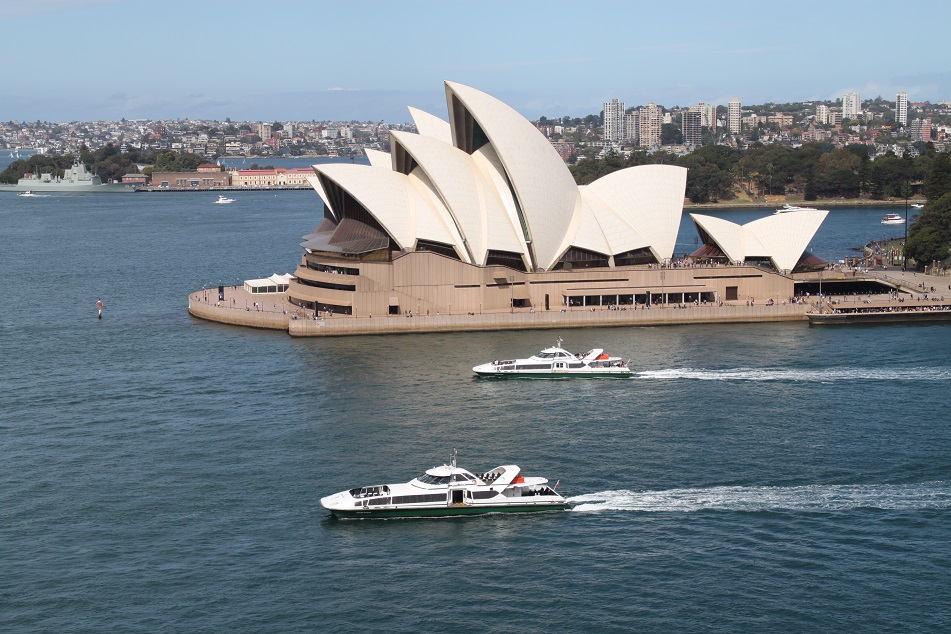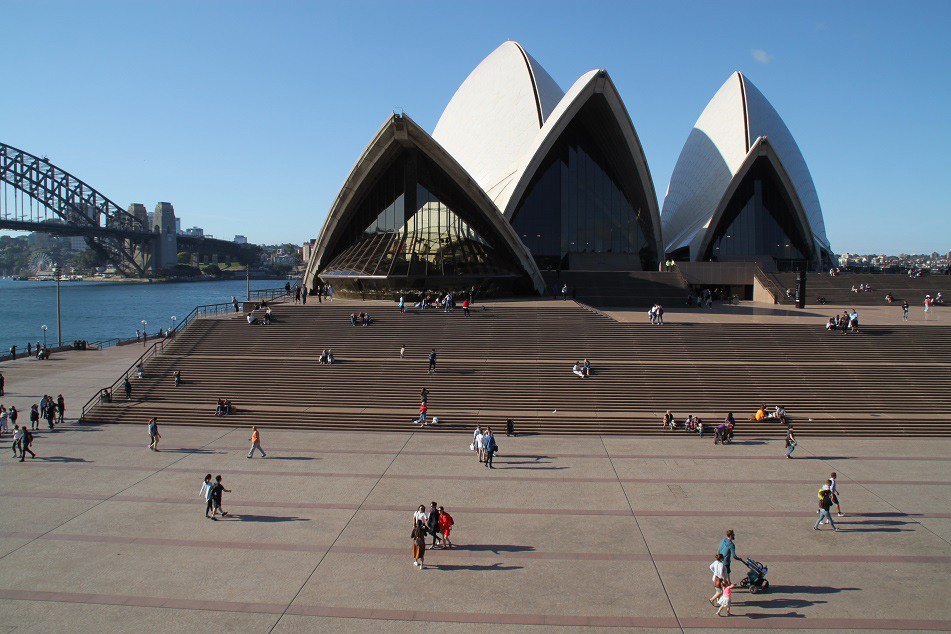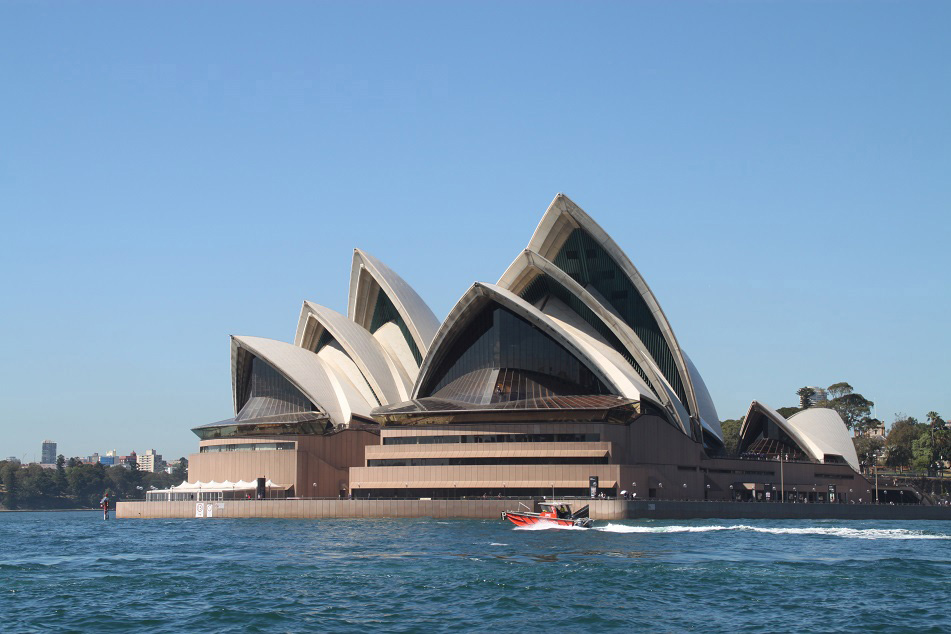Rivalries among kingdoms, empires and modern-day republics have profoundly shaped humanity in many ways. In the process of outdoing each other – through the economy, military, or culture – monumental edifices were often erected to symbolize a country’s prominence on the world stage. Not only were they built to impress, but also to last for many years to inspire future generations to reach even greater heights. Today a number of cities show how building such structures, if done right, can help bolster their global reputation and bring other benefits despite the astronomical costs usually incurred.
At the time when nothing seemed to be able to stop the growing global hegemony of the British Empire, an imposing structure was built on the banks of the River Thames to replace the old Parliament of England which was destroyed by fire. Built in a Gothic Revival style, the Palace of Westminster with its iconic Clock Tower (renamed Elizabeth Tower in 2012, and housing what is arguably the world’s most famous bell) not only dramatically changed London’s skyline, but it has now become the city’s most distinguishable landmark – even those who haven’t been to a lot of places would recognize it. Almost half a century later, at the heart of Europe following the unification of Buda, Pest and Óbuda to form the city of Budapest, another grand Gothic Revival building was commissioned on the banks of the Danube. Today, when one looks up Budapest on the internet, he or she will certainly get tons of images of the Hungarian Parliament Building for it has now become the city’s most defining monument.
Both London and Budapest built stately parliament buildings to epitomize the powers of the British Empire and the Austro-Hungarian Empire respectively. However, Paris, which was already home to palaces and buildings on a monumental scale, took a different approach when it hosted the 1889 World’s Fair. Taking its cues from France’s industrial and scientific progress in the 19th century, a wrought iron towering entrance to the fair was built. From the ground to the tip of its pinnacle, the tower – later known as the Eiffel Tower – stood at 324 meters upon completion, making it the tallest man-made structure on earth for more than 40 years. Several decades later, across the Atlantic, the race for new heights also took place in earnest. In 1930, the newly-finished Chrysler Building reached a height of 318.9 m, only to be surpassed by the Empire State Building 11 months later. Ironically, New York City’s obsession to build the world’s tallest buildings occurred during the early years of the Great Depression.
In the meantime, halfway across the globe and all the way down in the Southern Hemisphere, Australia, which had been founded as a convict colony almost 150 years earlier, was reeling from the major global economic downturn. Its dependence on agricultural and industrial exports meant that the country was hit especially hard. Unemployment reached 29% in 1932 as export demand and commodity prices plummeted. However, in the same year the colossal Sydney Harbour Bridge – which had been planned since 1914 but only started to be built in 1923 – was officially opened. Connecting the northern and southern sides of Port Jackson – an inlet of the Tasman Sea – the bridge was built on a much grander scale compared to Hell Gate Bridge in New York City, from which it drew inspiration. Straddling Sydney’s picturesque harbor, the Harbour Bridge became an iconic symbol of the city’s perseverance during challenging times as its construction helped many workers remain employed. In the years that followed the Great Depression, Australia’s economy gradually recovered thanks to an increase in wool and meat prices.
More than a decade after the completion of the Harbour Bridge, at a time when the Great Depression had become history, Sydney’s economy thrived which provided a boost to the city’s cultural scene. Eugene Goossens, the director of the Conservatorium of Music of New South Wales (NSW), saw the need for Sydney to have a bigger and more representative venue for large theatrical productions. With the support of the NSW Premier, an international competition was launched in 1955. Proposing a groundbreaking and futuristic design inspired by nature, a rather unknown Danish architect by the name of Jørn Utzon was announced the winner of the competition in 1957, beating out entries from 32 other countries. Construction began in 1959, but technical difficulties that arose in bringing the radical design to reality using existing building technology forced several changes to be made, eventually pushing its completion date 10 years behind schedule with a total cost overrun exceeding 1,300% of what was originally planned.
Finally the brand new Opera House was formally opened by Queen Elizabeth II in 1973 and has now become Sydney’s most endearing landmark. Nevertheless, with the construction of grander, more sophisticated and more imaginative buildings across the globe today, some 21st-century visitors might not fully comprehend what makes the Sydney Opera House so unique and invaluable. Its complex geometries spearheaded the use of computer-aided design to create previously impossible large-scale architectural plans. Technological innovation also played an important role in the structure’s air conditioning system where the water from the harbor was harnessed to cool down the building. The Museum of Sydney – occupying a plot of land where the official residence of the governor of New South Wales once stood – provides visitors with more information about the timeless architectural wonder which in 2007 was listed as a UNESCO World Heritage Site. Together, the Opera House – a symbol of Sydney’s cultural aspirations – and the Harbour Bridge – a testament to the city’s resilience – have shaped the image of Australia’s biggest city as a lively and dynamic place. Like true icons, both serve a purpose far greater than functionality, leaving their mark and ensuring a legacy for many generations to come.















MashaAllah! what a joy to my world! Muchas gracias! you made feel like I’ve been to all these places haha:) keep on sharing!
LikeLiked by 1 person
Hi JoyWadi. Thanks for dropping by! Glad this post made you travel vicariously. 🙂
LikeLiked by 1 person
Stunningly beautiful photos coupled with a very informative report focusing on the search of grandeur by all major powers on this planet made this an especially useful and delightful read. Have you heard of Hitler’s chief architect Albert Speer who had redesigned Berlin on paper and as model at the most grandiose scale imaginable? Well, we know what happened to Hitler’s empire. But you pointed out correctly that all empires past and present have this trend towards megalomania in common.
LikeLiked by 1 person
Thanks Peter! Actually I had not heard about Albert Speer until you mentioned his name. However, in Nuremberg I visited a remnant of Hitler’s obsession for grandiose structures: the unfinished Kongresshalle. Apparently one of Speer’s works — the Zeppelinfeld stadium — is located in the same Nazi rally grounds.
LikeLiked by 1 person
Yes, that was the man. Later during the war Speer became armament minister and got 25 years in prison for using forced labour in the munition factories.
LikeLike
Thanks for sharing this information, Peter. I have a cousin living in Nuremberg, so the next time I visit him I think I’ll pay the Kongresshalle another visit. It’s a grim reminder of what can go wrong if we allow populism to dictate our world view.
LikeLiked by 1 person
Reblogged this on Lincoln Life Blog.
LikeLike
An interesting article about the icons of Sydney, Bama! I really like the way you introduce them. Very smart! 😉
LikeLike
Much appreciated, Len! These two landmarks are probably the most photographed structures in Sydney, and I know a few people who didn’t really appreciate what they saw for they were unwilling to learn about the history of both sites. Hence this blog post. 🙂
LikeLiked by 1 person
Omg…. are you visiting australia… thinking of visiting adelaide?? 😊 loved your pics of the opera house
LikeLike
I went to Sydney and Melbourne back in October, and my posts from that trip are slowly coming out. 🙂 I would love to go back to Australia sometime in the near future, although honestly I haven’t been thinking of Adelaide. Perth is closer to Jakarta, but I also want to visit Uluru. But then Queensland seems pretty interesting too. Maybe I should look up what there are to see in South Australia.
LikeLike
My dream place to visit… amazing photography 👍
LikeLike
Really appreciate your kind words! I wish you’ll get the chance to visit Sydney in the not-too-distant future.
LikeLiked by 1 person
I hope so 🙂 Thank you
LikeLike
Superb photos and information! I like your first paragraph.
LikeLike
Thanks Marilyn! The first paragraph was inspired by my visits to some monumental sites, as well as my observation of what famous landmarks bring to the cities where they’re located. Glad you enjoyed it!
LikeLike
My mother remembers her father bringing home broken biscuits and thinking what a treat it was during the depression. When my daughters were growing up, they’d refuse a broken biscuit!
LikeLike
Time changes, so do people. I remember when I was in my final year in college, my friends and I thought many freshmen and sophomores were a lot more spoiled than us. But then, maybe our seniors thought the same about us.
LikeLiked by 1 person
What a wonderful post Bama. I grew up in Canberra during the years of the Opera House construction. I was nine yrs old when construction began, and 23 when it was completed. When the cost over-runs became untenable the govt created the Opera House Lottery which largely financed the construction. I remember it all being a bit of a running joke until it was finally finished and became such a hit.
Alison
LikeLike
Thanks Alison! Your story about the lottery actually reminds me about a similar scheme carried out by the Indonesian government to fund the 1997 Southeast Asian Games — right at the beginning of the Asian Financial Crisis. I don’t know how much money they raised, but I’m not at all surprised if only a small portion of it actually went to the games. I believe the money raised by the lottery in Australia was a lot more accountable.
LikeLiked by 1 person
Nice article, very informative for traveler and planner like me 😀 hopefully i can going to there later, as soon as i can
LikeLike
Thank you, Khumairoh. Glad this post helps you plan your trip to Sydney — sooner than later hopefully!
LikeLike
Another great history lesson, Bama! By the way, when do you reveal which of the two big Australian cities you liked best?! (Or did I miss it somehow?)
LikeLike
No, you didn’t miss anything, Lex. Melbourne is next — after a few posts on Indonesia. That post on which city I like best is more likely to be published sometime in February or March. I have a long list of posts to write from my past travels, so I’d better be disciplined about the schedule! 😀 Thanks for the comment!
LikeLiked by 1 person
Good
LikeLike
Thanks Deepak.
LikeLike
‘Haven’t yet been to Australia, but your images are inspiring.
Marvellous stuff!
LikeLike
Glad the photos inspire you to go to Australia! I wonder if you’ll find the country more interesting than how you think it is now, because that’s what happened to me. I ended up really enjoying both Sydney and Melbourne more than I thought I would. Thanks Victoria!
LikeLiked by 1 person
These photos are awesome! I love how I can imagine being there. This has made me add Australia to my travel list.
LikeLike
Hi Bri! Thanks for reading! You really should go to Australia — its cities are nice and the food scene there is among the most fascinating I’ve ever seen.
LikeLike
Thanks!
LikeLiked by 1 person
Amazing collection of pictures
LikeLike
Much appreciated, Nishtha!
LikeLike
Lovely Post Bama about my home town Sydney. Every day I fall in love with Sydney again. The harbour, the city skyline, the natural beauty of the parklands – I am truly blessed to live here.
LikeLike
Oh you’re so lucky to live in such a beautiful city! Sydney not only did live up to its reputation, but it pleasantly surprised me in so many ways. I would love to go back in a heartbeat! Thanks for reading!
LikeLiked by 1 person
foto-fotonya bagus-bagus…… bisa belajar banyak
LikeLike
Terima kasih sudah mampir di blog saya ya. Di dunia blogging kita semua saling belajar dan menginspirasi kok.
LikeLike
Bama, I loved how you shot Sydney’s two most beloved landmarks from so many different angles. Many of the world’s greatest architectural icons have a way of looking timeless, and that is true of both the Sydney Opera House and Harbour Bridge. It’s easy to see how daring the Opera House was when the design was first proposed – the building may have opened more than 40 years ago, but it still looks futuristic and avant-garde. I had no idea the Harbour Bridge was inspired by an earlier (and smaller) counterpart in New York, so thank you for that fascinating little tidbit!
LikeLike
Thanks James! The Sydney Opera House really is a timeless building. I can imagine 100 years from now people will still marvel at it as they will at those designed by Zaha Hadid, Rem Koolhaas, or other big names — and this is something that can only be understood better if we learn about the history on how this magnificent structure came into reality. My pleasure, James! Maybe one day we can go see Hell Gate Bridge with our own eyes.
LikeLiked by 1 person
Hard to imagine these great cities without their iconic symbols! And the Sydney Opera House is indeed an exceptional piece of architecture. Thank you for the fabulous narrative and gallery Bama.
LikeLike
I can’t help but think of India’s own iconic landmark, specifically the Taj Mahal. Sydney Opera House and Harbour Bridge’s secular nature certainly helps them stay clear of religious sentiments that shroud Agra’s Mughal monument these days. Always appreciate your encouraging words, Madhu!
LikeLiked by 1 person
Such a stunning city! And as always, I feel like you know way more about my own country than I do! 🙂
LikeLike
Nah, I believe not. I happened to go to places where I could learn more about Australian history. In doing so, I might have missed something out there! 🙂
LikeLike
That’s really wonderful to know about such beautiful places around the world.. Wanna visit it💝
LikeLike
Hope you’ll get the chance to visit Sydney sooner than later, Ragha!
LikeLike
Sure.. That sounds great 💝
LikeLike
Wonderful post, what a great storyteller you are!
LikeLike
I really appreciate your kind words, Ingrid! Thanks for reading.
LikeLiked by 1 person
Magnificent photos! Have always wanted to visit Sydney. Thanks for the great info.
LikeLike
Thanks! Hope you’ll get the chance to visit Sydney sooner than later.
LikeLike